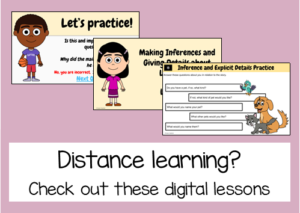 This is part three of a three-part series about the Common Core:
This is part three of a three-part series about the Common Core:
1. What is the Common Core?
2. Benefits of the Common Core
3. Drawbacks of the Common Core
Drawbacks to teaching with the Common Core
While using the Common Core State Standards (CCSS) in your classroom provides several advantages, there are also some marked drawbacks to being made to adopt the Common Core standards in your classroom. If you are using the Common Core to teach and assess student skills in your school, knowing these potential negatives can help you to recognize them, understand them, and attempt to mitigate them during your own teaching and testing of individual students. Here are some of the drawbacks to the Common Core.
Some teachers and schools place too strong an emphasis on the Common Core
Adoption of the Common Core standards means that teachers and schools have a goal to teach students the skills listed in the Common Core domains for mathematics and English language arts. It doesn’t mean that that’s all you should be teaching your students throughout the school year. Learning skills according to the Common Core is certainly important, and can help to keep a child on track to succeeding in education and in the workplace… but over-emphasizing adherence to the Common Core standards means that students may miss out on other important skills and knowledge. History, geography, fine arts, foreign languages… there is a lot of interesting teaching and learning to be achieved in a school classroom. Teach the Common Core standards, but make sure that your students benefit from learning other knowledge as well.
Stress on students, parents, teachers and schools to meet the Common Core standards
The Common Core standards define a set group of skills that should be attained by students of a specific grade level by the end of the school year. This expectation can put stress on students, parents, teachers and schools to meet those standards, and can cause more stress in those areas where standards are not being met. The stress of achieving certain skills during the school year can take away some of the fun of exploring, experimenting, absorbing knowledge, and making mistakes as a natural part of learning.
Some teachers feel that the Common Core standards set too low a baseline
While the Common Core State Standards are meant to provide a common baseline for all students in school boards across the United States, some teachers and school administrators feel that the standards in the Common Core State Standards Initiative set the bar too low for any particular grade level. This means that while students could learn at a level above the level set by the Common Core State Standards Initiative, in order to conform with the federal initiative to use these standards, those students will need to be tested at levels lower than what they are already capable of.
The Common Core standards do not take into account the whole student
A human being is an amazing mix of many skills, strengths, and weaknesses. The Common Core State Standards define a student based on a very particular set of skills and do not take into account a holistic view of the student. A capable student with many excellent qualities and capabilities in certain areas can be made to feel like a failure if he or she is not able to achieve the specific standards indicated by the Common Core State Standards Initiative.
When adopting the Common Core State Standards, it is important to remember that while acquiring skills according to the standards is important to a child’s education, it does not make the child. Educators should make efforts to encourage the interests and capabilities of their students even if they do not correspond with particular Common Core standards.
The Common Core standards encourage an emphasis on testing
In order to prove that students have acquired skills according to the Common Core standards, those skill must somehow be assessed. In many schools across the country this constant assessment of skills according to the Common Core results in a lot of testing. Many schools are rated according to the degree to which their student bodies have achieved a certain level of progress with meeting the Common Core standards, which puts a strong demand on students and teachers to prepare for and take skills assessment tests. Some teachers complain that almost every week they are subjecting their students to one test or another; others complain that school boards are more interested in the ranking of their schools than they are the education of their students. This has resulted in a great deal of stress for many students and teachers.
The Common Core standards are not used everywhere
The Common Core State Standards Initiative has been adopted by 48 of the 50 states; however, it is not used in either Texas or Alaska, and Minnesota has chosen not to use the mathematics standards in their school districts. The standards are also not found elsewhere in the world; while some United States overseas territories do use the Common Core State Standards, other English-speaking countries around the globe such as Canada, England, Australia, and New Zealand employ completely different approaches to education. In addition, certain private schools within the United States do not use the Common Core State Standards, as they are not mandated to do so.
Using the Common Core State Standards
This post and the previous two posts have outlined what the Common Core State Standards Initiative is all about, and some of the pros and cons to adopting the teaching of the Common Core State Standards in the classroom. I hope that you have found them interesting and informational.
If you have any views of your own to share about the Common Core State Standards Initiative or about teaching according to the standards, I’d be pleased to hear about them. Feel free to leave a comment or question below.



